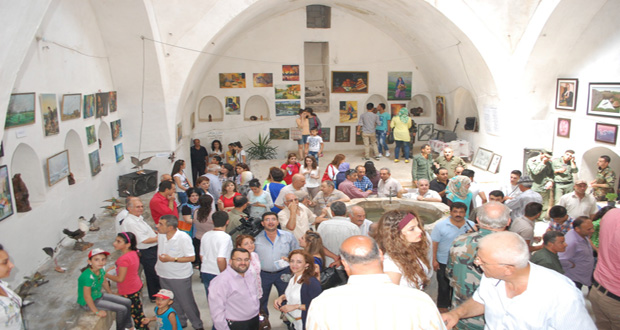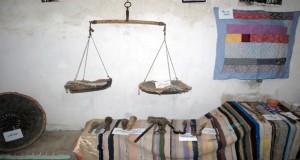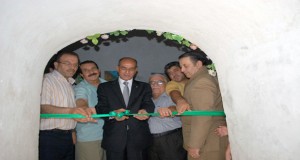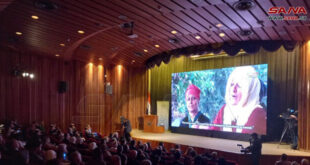Hama, SANA A Photo exhibition was held at Salamiyeh archeological bathhouse encompassed photos of archeological sites, potteries and tools, handmade sculptures and plastic art paintings, in addition to a number of children’s drawings.
Touring the exhibition, Hama Governor Ghassan Khalaf told SANA that it sheds light on the most prominent archeological and heritage sites in the province and the houseware and craft tools which were used in the past, and it reflects the uniqueness of the Syrians’ daily life throughout history.
Salamiyeh has enjoys a significant position on the archeological and historical map of Syria as it contains a rich and varied cultural reservoir, Khalaf said.
Salamiyeh, located 33 km to the southeast of the central Hama province, 45 km northeast of Homs province, is a cultural hub as it is nicknamed the “Mother of Cairo” and it is the birthplace of the elite Syrian poet Mohammad al-Maghut.
Chairman of Hama Antiquities Department Abdel Qader Farzat said the exhibition embraced scores of photos and pictures that embody the most remarkable tourist, historical and folkloric destinations in Salamiyeh, in addition to the traditional handicrafts which the city is famous for.
Farzat added that the exhibition also casts lights on the old city of Salamiyeh with its archeological and heritage, milestones, some ancient-use farming equipment, musical instruments and some folk industries in the city.
Salamiyeh’s archeological bathhouse, famous for its unique architectural style which dates back to the Roman era, is located at the city center, near a large underground Byzantine cistern which is said to lead all the way to Shmemis Castle.
It was selected to host the exhibition due to its cultural and historical value in the city as it is considered one of the most integrated archeological bathhouses in the Levant as a whole.
The bathhouse represents, with its archeological relics, all the stages which Salamiyeh City witnessed throughout history. The importance of the bathhouse increased during the Byzantine era as the city started to play a more important religious role at that time and continued in the Islamic era.
The bathhouse consists of a rectangular area estimated at about 448 square meters. It has four external facades; the most important of which is the main eastern facade which includes the main door of the bathhouse.
The photo exhibition was organized by Hama Antiquities Department in cooperation with Antiquities Association in Salamiyeh City.
H. Zain/ Barry
 Syrian Arab News Agency S A N A
Syrian Arab News Agency S A N A











